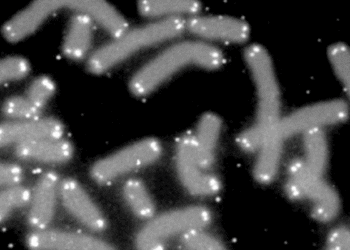Metagenomic next-generation sequencing of cerebrospinal fluid yielded improved sensitivity and specificity for the detection of central nervous system neoplasms
1. Cerebrospinal fluid metagenomic next-generation sequencing, a sequencing method requiring low specimen volume and no preservation of cell integrity, may be used as an adjunctive clinical tool for central nervous system neoplastic workup and detection.
2. The use of this novel technique is highlighted in cases where clinical suspicion of central nervous system neoplasm remains high despite negative cerebrospinal fluid cytologic testing and/or flow cytometry results, given its low risk of false-positive results.
Evidence Rating Level: 3 (Average)
Study Rundown: Malignant neoplasms of the central nervous system (CNS) are notoriously difficult to diagnose as they frequently mimic occult infections and autoimmune/inflammatory disorders in clinical phenotype and on diagnostic imaging. The use of cerebrospinal fluid (CSF) cytologic examinations and flow cytometry has also yielded low sensitivity in diagnosing CNS neoplasms, likely owing to the paucicellular nature of CSF, including small numbers of malignant cells and the need to preserve the morphological structure of the cells before they lyse. This case-control study sought to determine whether CSF metagenomic next-generation sequencing (mNGS), an improved sequencing method with high throughput, could identify aneuploidy, a hallmark characteristic of malignant neoplasms, in difficult-to-diagnose cases of CNS malignant neoplasm. The main endpoints of the analysis were the sensitivity and specificity of aneuploidy detection using CSF mNGS. Secondary endpoints included a comparison between CSF and tumor tissue chromosomal abnormalities and the identification of neuroimaging characteristics that were associated with test performance. Among 130 patients with difficult-to-diagnose cases of CNS neoplasms, many of whom with negative CSF cytologic testing and/or flow cytometry results, CSF mNGS detected genetic evidence of a malignant neoplasm, with a sensitivity of 75% and specificity of 100%. These results suggested that CSF mNGS, a sequencing method requiring low specimen volume and no preservation of cell integrity, may be used as an adjunctive clinical tool for CNS neoplastic workup and detection. Its role is highlighted in cases where clinical suspicion of CNS neoplasm remains despite negative CSF cytologic testing and/or flow cytometry results, as it has a low risk of false-positive results. A limitation of this study was that due to the prevalence of a CNS malignant neoplasm being controlled for in this study, it was not representative of a relevant clinical population and thus, direct assessment of positive and negative predictive values of CSF mNGS were not completed.
Click to read the study in JAMA Neurology
Relevant Reading: Development and optimization of metagenomic next-generation sequencing methods for cerebrospinal fluid diagnostics
In-Depth [case-control study]: Across 2 case-control studies performed at the University of California, San Francisco, 130 patients were enrolled (median [IQR] age, 57.5 [43.3-68.0] years; 72 men [55.4%]). The first study used 125 residual laboratory CSF specimens from 47 patients with a CNS malignant neoplasm (positive control) and 56 patients with other neurological diseases (negative control) between July 2017 and December 2019. The second study evaluated 12 patients compared to 17 matched control participants who were enrolled in an ongoing prospective study between April 2014 and July 2019, with presentations that were suggestive of neuroinflammatory disease but ultimately diagnosed with a CNS malignant neoplasm. Overall, the sensitivity and specificity of the CSF mNGS assay was 75% (95%CI, 63%-85%) and 100% (95%CI, 96%-100%), respectively. In the test performance study, aneuploidy was detected in 64% (95%CI, 41%-83%) of the patients with nondiagnostic cytologic testing and/or flow cytometry. In the neuroinflammatory disease study, aneuploidy was detected in 55% (95%CI, 23%-83%) of patients who were ultimately diagnosed with a CNS malignant neoplasm. In patients where aneuploidy was detected, 38 (90.5%) of them had multiple copy number variations with tumor fractions ranging from 31% to 49%.
Image: PD
©2021 2 Minute Medicine, Inc. All rights reserved. No works may be reproduced without expressed written consent from 2 Minute Medicine, Inc. Inquire about licensing here. No article should be construed as medical advice and is not intended as such by the authors or by 2 Minute Medicine, Inc.



![ABCD2 Score: Predicting Early Stroke Risk After Transient Ischemic Attack (TIA) [Classics Series]](https://www.2minutemedicine.com/wp-content/uploads/2013/05/web-cover-classics-with-logo-medicine-BW-small-jpg-350x250.jpg)



